How to Save Overwatered Succulents
If you’ve overwatered your favorite succulent, don’t despair! In this article, I’ll show you exactly how to save overwatered succulents and how to get them back to a healthy state whenever possible.
Overwatering is unfortunately the most common reason succulents don’t survive. In fact, it’s a common issue that many people face with their succulent plants at one point or another, no matter how experienced they may be.
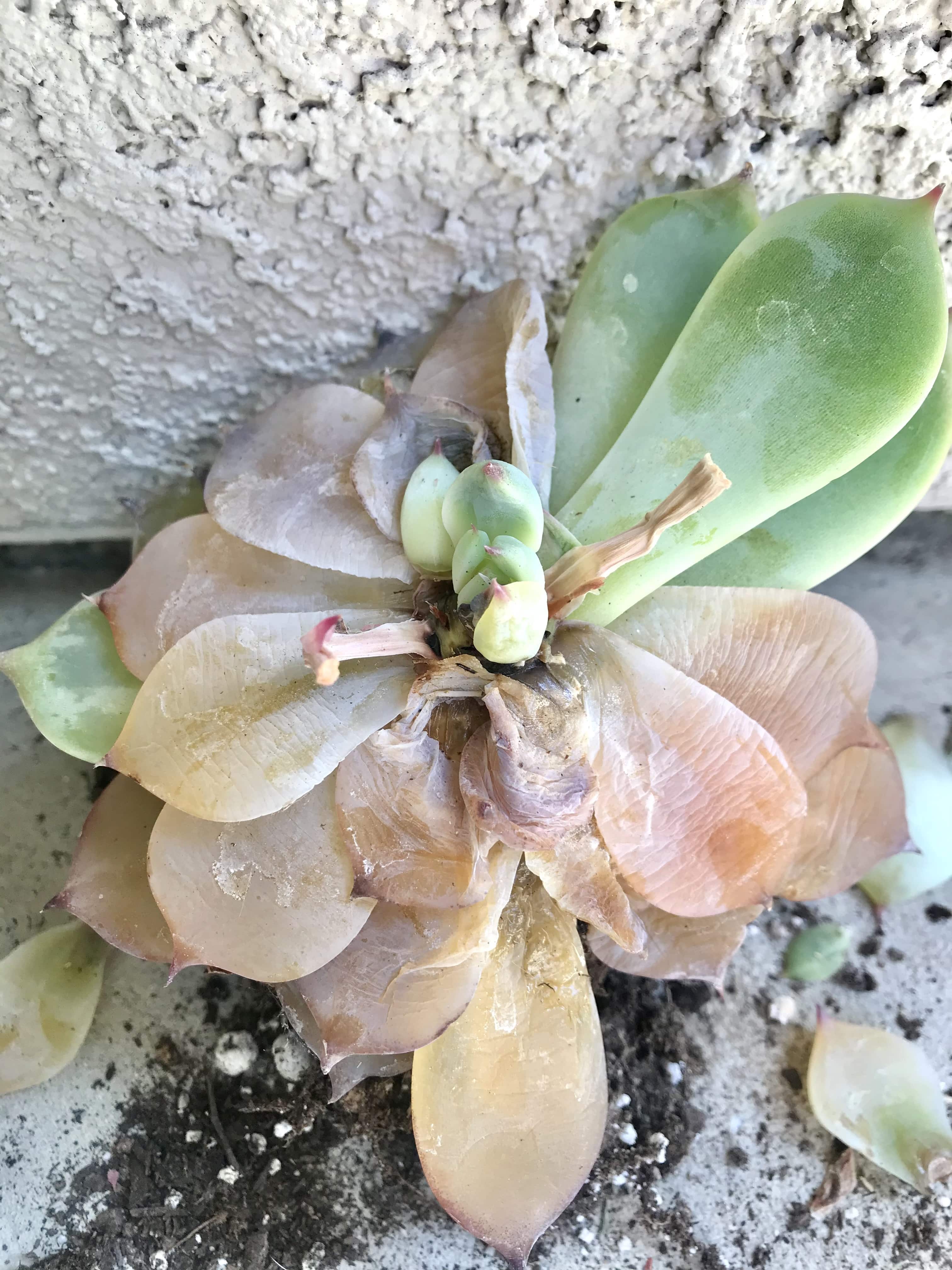
If the problem is grave enough, you might not be able to rescue your entire plant BUT more often than not, you’ll be able to at least save the healthy parts of your overwatered succulent by noticing the first sign.
Before we get into the tutorial, I’d like you to keep in mind that succulents are drought-tolerant plants.
This means they can survive drought out in the wild, which is what makes them so low-maintenance but it’s also what makes them very sensitive to overwatering.
Most succulents have a shallow root system with very thin roots, almost hair-like, making them more susceptible to rot if watered improperly.
Succulents are some of the most beautiful plants in existence (in my opinion!) so saving them when they’re in trouble is worth the extra effort!
If you’re discouraged by your recent overwatering – don’t be. Keep trying and you’ll get the hang of it soon enough.
Always remember that so much of gardening is trial and error; keep practicing and the plants will reward you.
Below I’ll go over information that will help you avoid overwatering, including:
- using succulent soil instead of other types of soil
- the importance of drainage holes and providing good drainage
- how to identify early signs of overwatering
- my favorite gardening tool that helps with avoiding overwatering
Learning these key things will help you understand when it’s time to water your plants so that overwatering becomes less of an issue in the future.
The better you get at watering, the more vibrant and healthy your succulent will look, just like this photo, below!
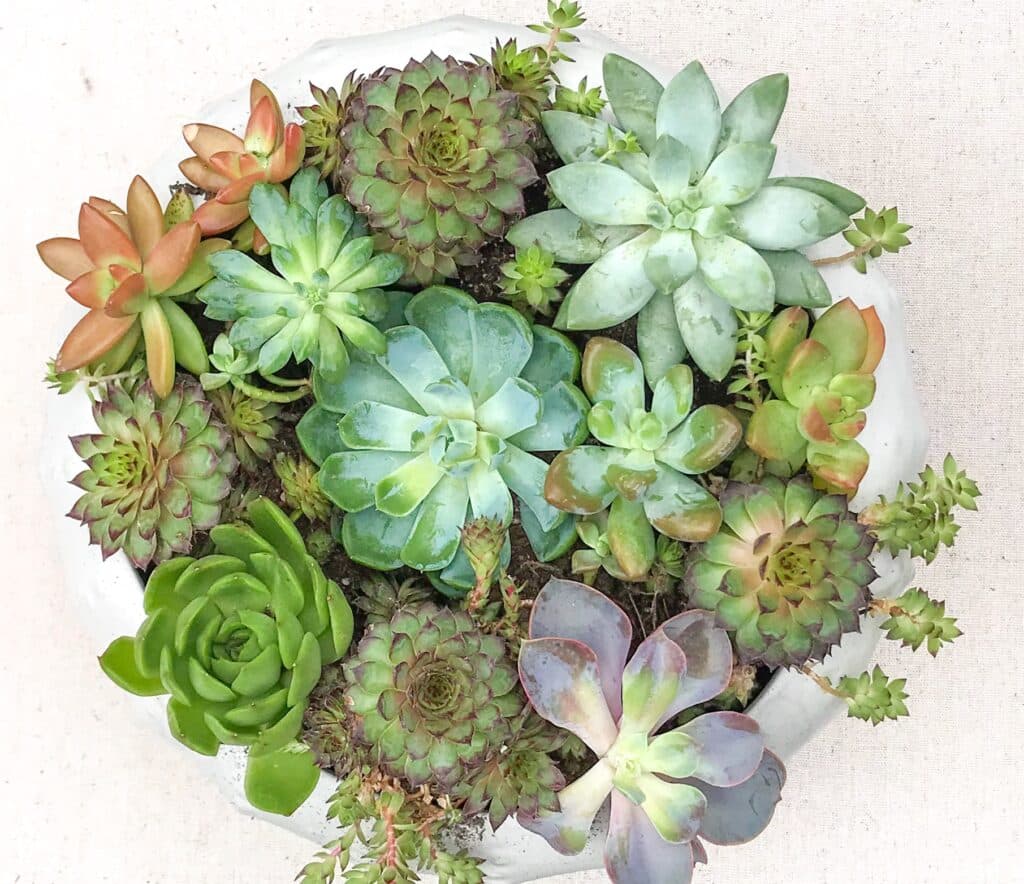
What Exactly Does Overwatering Mean?
If you’ve overwatered your succulent, you might be wondering where you went wrong. You might even be confused about actually what qualifies as overwatering.
Those are valid feelings when it comes to succulents since they have such unique watering needs! Let’s talk about this.
Overwatering doesn’t refer to the amount of water you give your plant at any given time, but the frequency with which you water it. Amount and frequency are two different things.
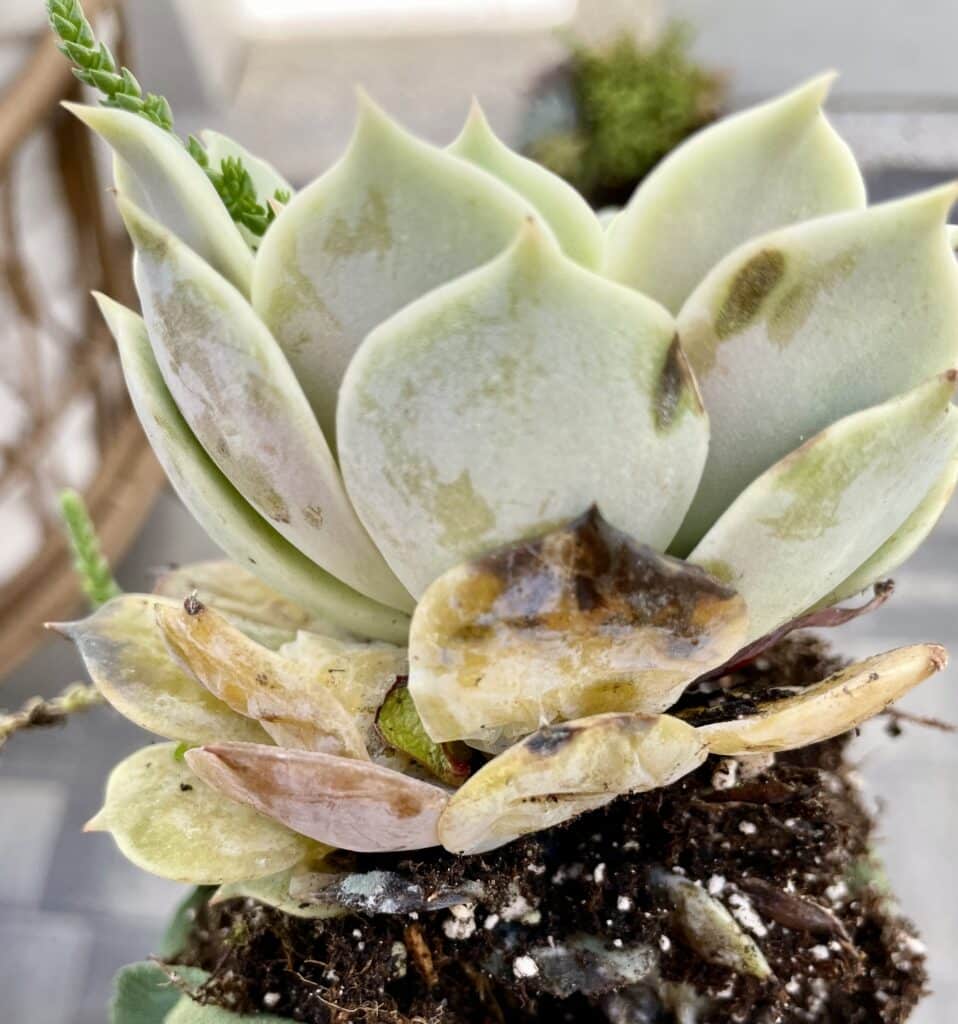
You see, succulents don’t like to sit in soggy soil because this threatens their root system. If the roots exist in wet soil for long, they eventually begin to rot. This can sometimes happen very quickly, too, within a matter of days.
Succulents need a period of dryness between waterings.
It’s often easy to assume that because succulents are living plants, they need to be watered like other plants that need consistent moisture to stay healthy.
But this simply isn’t the case.
The best way to keep your indoor succulents happy is to water them only when all of the soil in the entire pot is completely dry.
For outdoor succulents, however, you can water when the first few inches of topsoil feel dry. You don’t need to let your outdoor succulents go bone-dry before watering them. In fact, you shouldn’t, as this can lead to other problems like dehydration and sunburn.
With outdoor succulents, you don’t have to make sure all of the soil in the pot is dry before watering again.
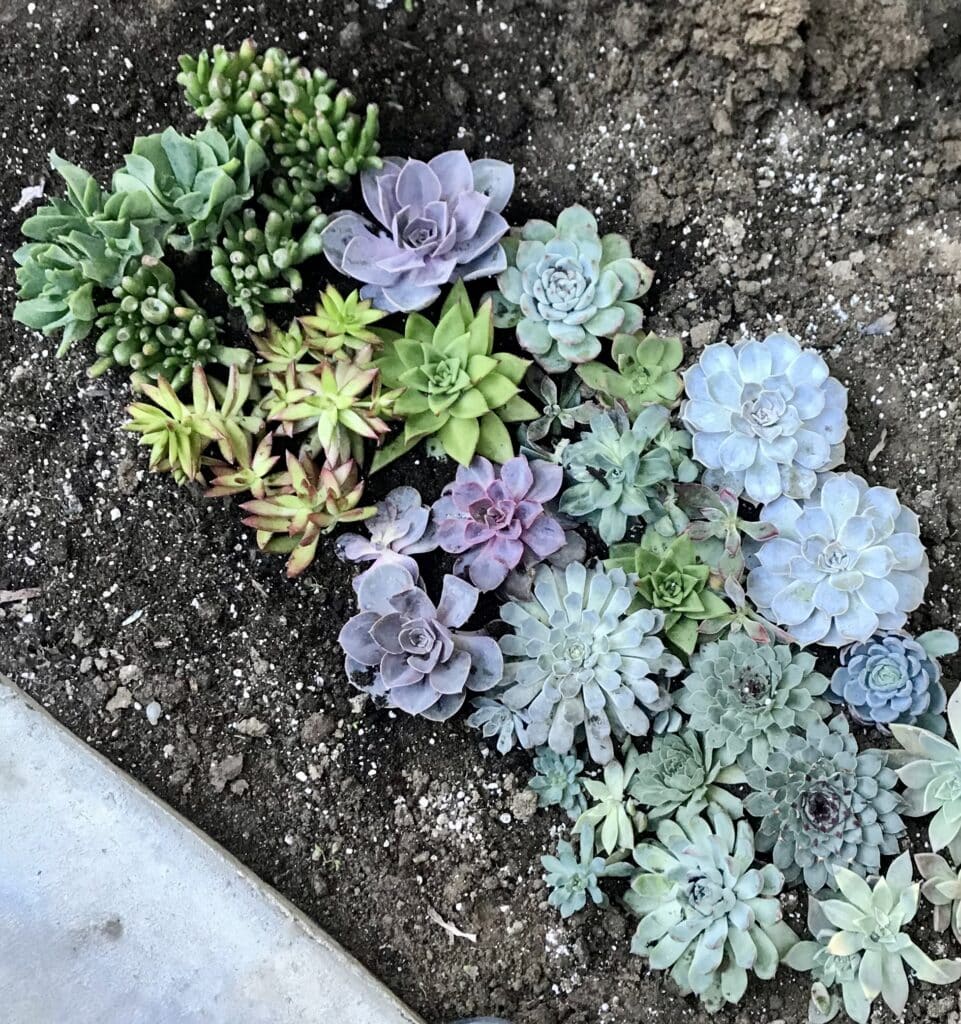
Outdoor pots get much more access to direct sunlight and airflow than indoor succulents, which means their soil dries out faster.
Also, another common cause of overwatering happens when we let the bottom of the pot sit in a saucer that’s full of water. This is a big no-no.
After each watering, always remember to throw out the water that’s in the saucer beneath the pot, if you’re using one.
If you don’t toss out the excess water from the pot saucer, the roots of the succulent will sit in a pool of water for an extended period of time, inevitably causing root rot.
Tools that Help Avoid Overwatering
I’m a firm believer in using gardening tools to help avoid overwatering, especially if you’re a beginner.
If you tend to overwater your plants, there are a few tools that can help.
These gardening supplies include
- Fast-draining soil like cactus mix or succulent mix
- terra cotta pots with a drainage hole at the bottom
- soil moisture meter that reads the moisture in the soil (my favorite tool!)
These three gardening supplies can go a long way in helping you avoid overwatering issues like fungus gnats and root rot, even if you make a mistake and water too frequently.
Cactus mix is made specifically for succulents in that it’s not meant to hold onto excess moisture. It allows for more airflow, too.
Instead of a regular potting mix, try a cactus mix. Also, succulents love terra cotta pots because they don’t retain heat and moisture like plastic pots do.
My top recommendation is a soil moisture meter because it’s so effective at reading the moisture in the soil, which can help you decide if it’s time to water your succulents again.
It’s useful for other plants too – both indoors and outdoors, potted or planted in the ground.
I keep this tool handy so I can grab it quickly when I need it.
Soil moisture meters are inexpensive and widely available both online and in garden nurseries and home improvement stores.
You simply stick the meter into the soil and in a matter of seconds, it will let you know if the soil is wet or dry.
It’s especially useful for indoor succulents and houseplants.
How to Deal with Potted Succulents After a Heavy Rainstorm
This year, my potted succulents received more rain than I ever thought possible in my area.
We’ve had so many days of heavy rain, which is not something my outdoor plants are used to.
As a succulent owner, I know that too much rain can cause succulent rot.
Luckily, I haven’t lost any yet but this is because I made sure to do the things below.
The following advice is how you should care for your potted succulents after prolonged rainfall:
- Before the rain storm hits, move and provide shelter for any pots that don’t have a drainage hole
- Make sure to inspect the pots after heavy rains. Are they water-logged? If so, gently tip the pot over so any excess water can travel out
- Dump all water from the saucers. The extra water here can cause root rot quickly
- Make sure not to water again until the first two inches of soil feel dry
Signs of Overwatered Succulents
The signs of an overwatered plant are pretty obvious if you pay close attention to your plants.
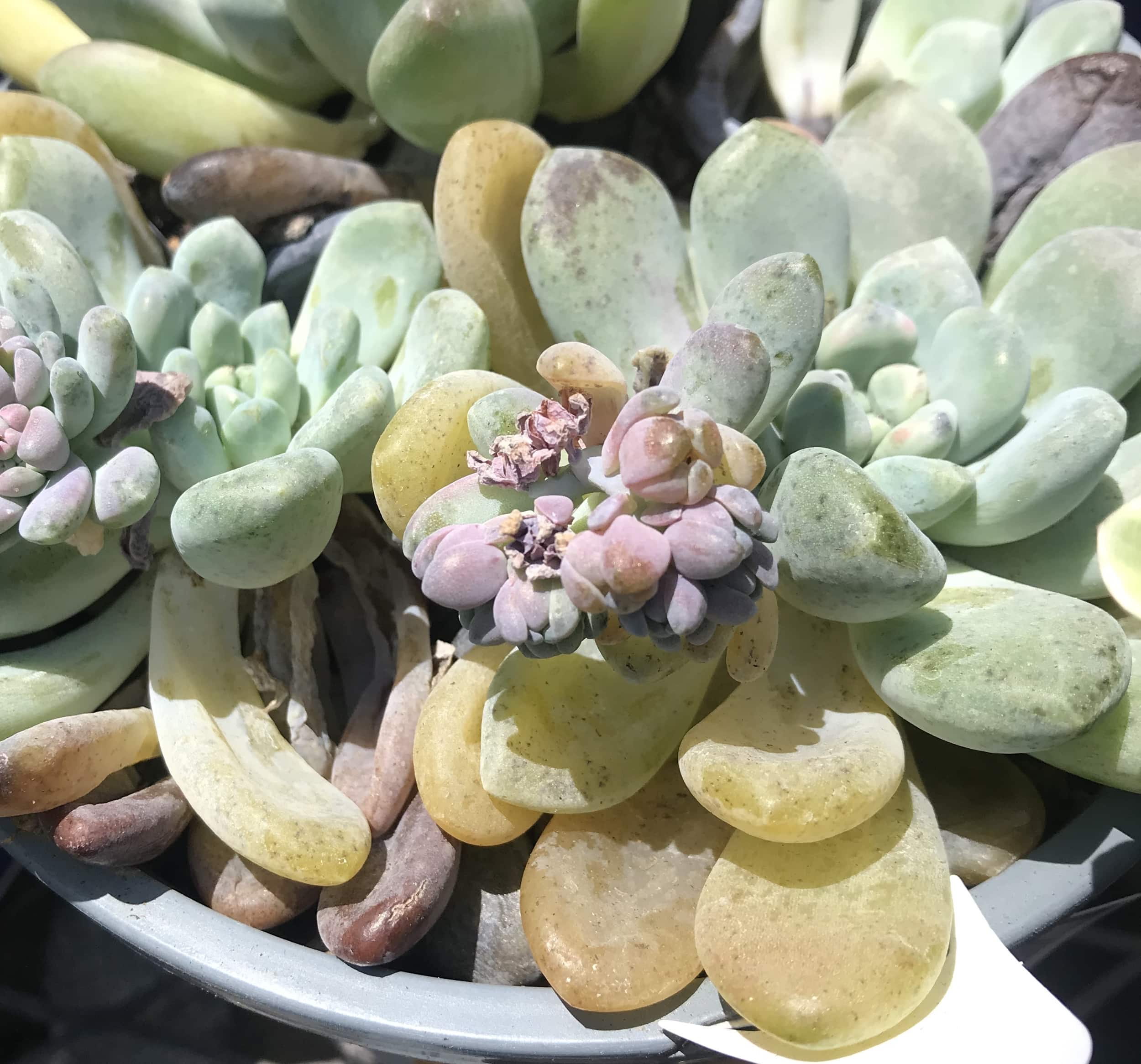
Some of the most obvious signs of overwatering include:
- Yellow or pale leaves. This is one of the early stages.
- Mushy leaves. Healthy leaves on a succulent should feel firm, not squishy or deflated.
- Leaves that fall off the stem at the slightest touch. The leaves have grown too heavy from storing too much water. The storage cells have burst.
- Leaves or stems are turning black. Or the stem has brown spots. This is a sign of rot or fungal disease caused by overwatering.
Squishy leaves mean you’ve been watering too frequently and not letting the soil dry out between waterings.
Below is an example of stem rot and this is something that eventually affects the whole plant. This is the late stage of severe overwatering that wasn’t addressed quickly.
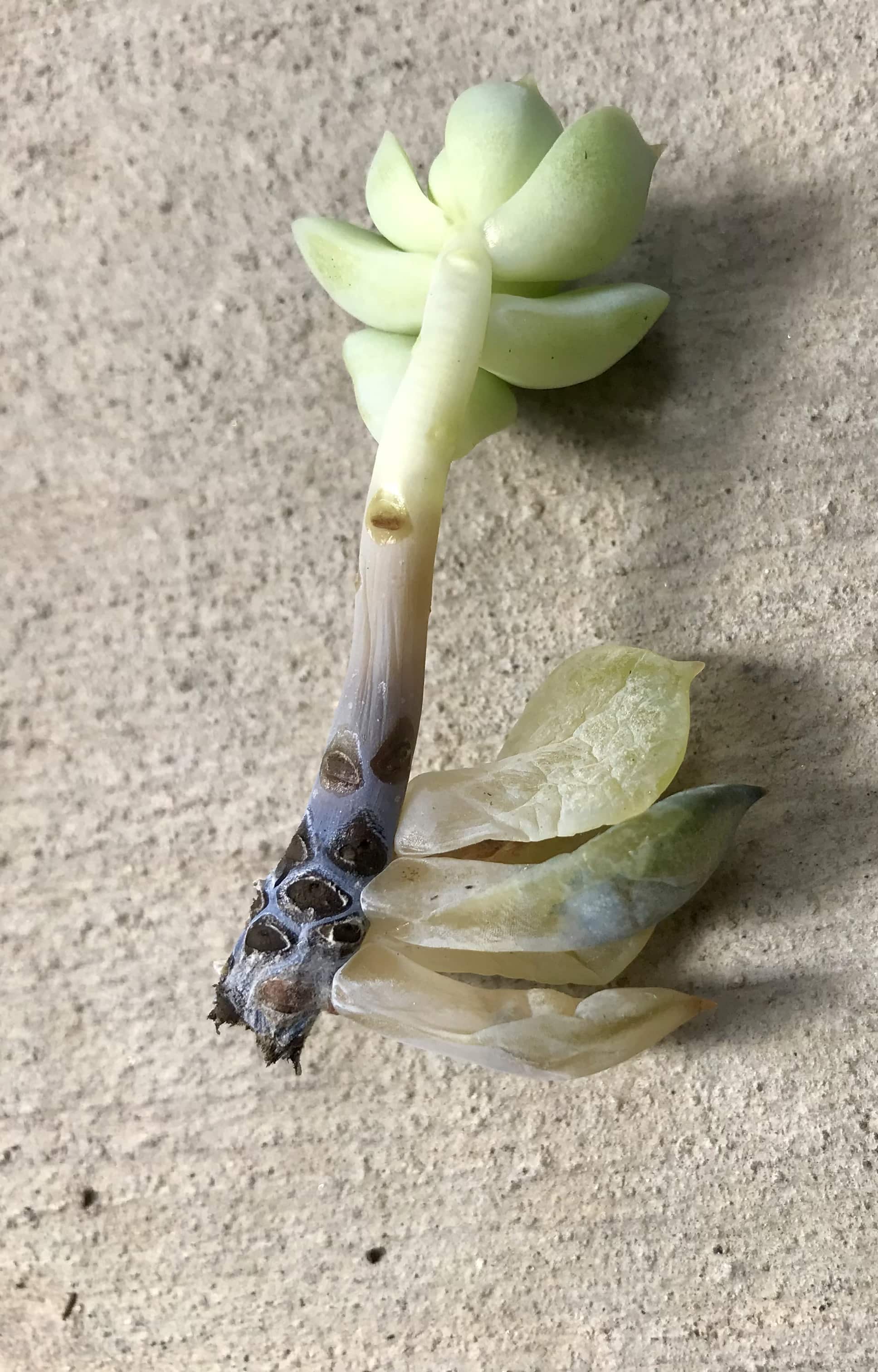
Unfortunately, a black stem indicates the root system is already rotting.
There’s no saving this stem or root system, but if you have healthy leaves on the succulent, then you can propagate them to create more baby succulents! This is one way to “save” an overwatered succulent.
Immediate Steps to Take in Order to Save an Overwatered Succulent
If you notice signs of overwatering like yellow or mushy leaves, take swift action.
Follow these steps to save an overwatered succulent:
- Gently pluck those translucent, mushy leaves from the stem and discard them.
You might just be able to save your entire plant, minus a few of the squishy leaves, which unfortunately cannot be saved. Those are too far gone and won’t return to their former healthy state.
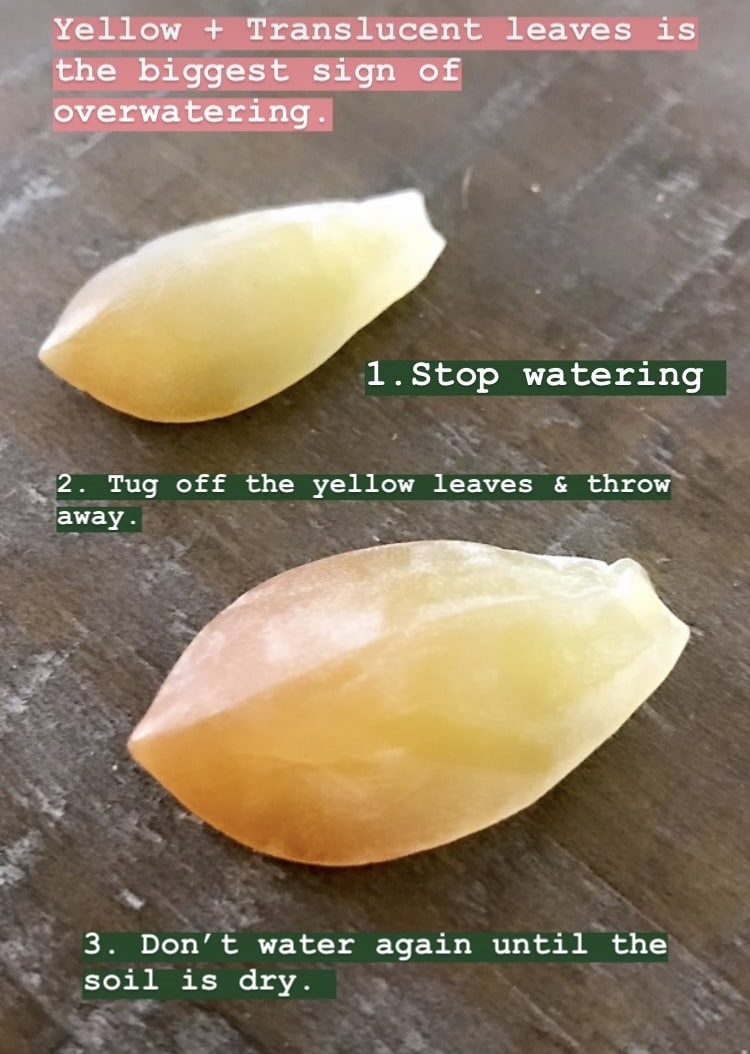
2. Let the roots air dry for a few days
This might be the most important thing you do for your overwatered succulent that’s showing signs of distress. Let it dry!
Take the plant out of the pot and get rid of all that soggy, wet soil as soon as possible. Throw the soil out, then rinse and disinfect the pot. Set aside to dry.
If the stem is rotting, toss it out now because it can’t be saved. If there are any healthy leaves remaining, gently pluck those off for propagation (more on that, below).
If the stem is not rotted, then proceed like this: rinse the roots to make sure no soil is left. Gently cut away at any roots that appear brown or black in color. Remember that healthy roots should be light in color.
Then, set the plant aside in indirect light (NOT direct, full sun or it’ll burn and maybe even die).
Allow the roots to air dry for about 2 days.
3. Repot into fresh soil
Now that the root system is dry, it’s time to repot it into fresh soil. Fill the pot with cactus mix, make a small hole in the soil, and place the plant inside.
Make sure the entire root system is covered in soil. Wait another day or two to water the plant.
How to Propagate Cuttings of Overwatered Succulents
If the root system has rotted, along with some of the stem, you might be able to save the healthy stem with the rosette attached (or the top of the plant).
If the top part of the stem is still healthy, you can treat it as a succulent cutting and propagate it that way. After a few weeks or months, you’ll start to see new growth.
Propagating succulent cuttings is a super simple process! Here are the steps, below:
- Take some clean scissors and cut into the stem right above where the rot begins.
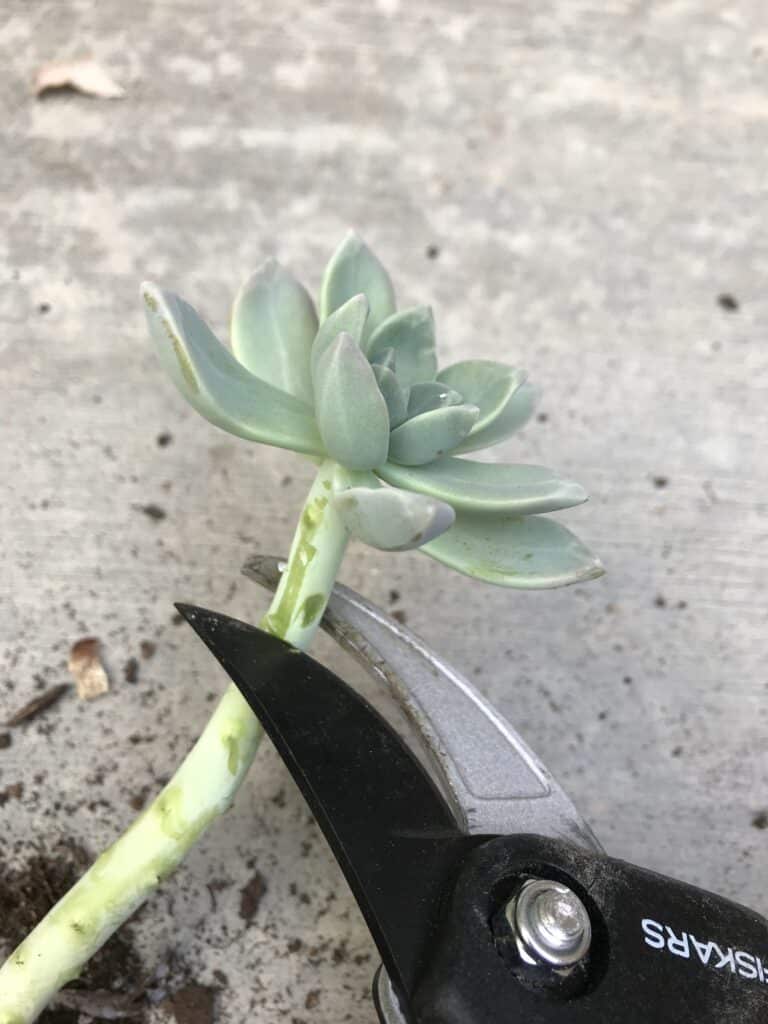
2. Set the healthy succulent aside in the shade for a few days to let the end callus over.
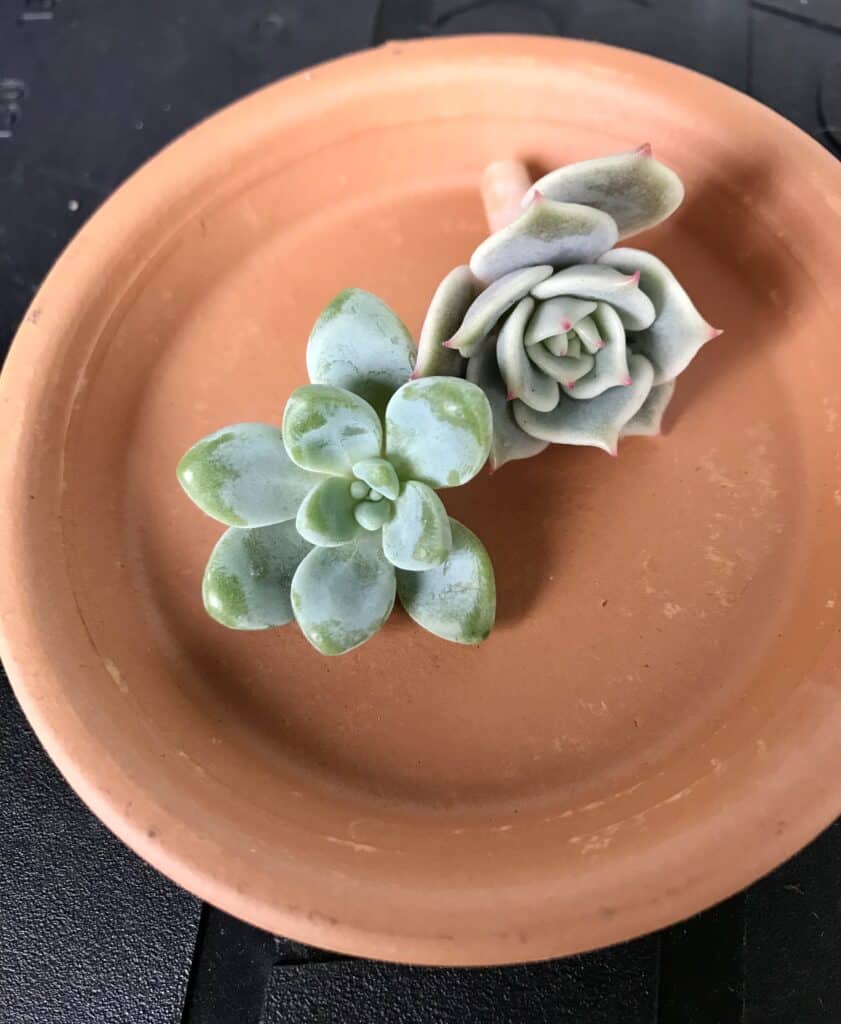
3. Then, plant the succulent in fresh well-draining soil in a clean pot and it will eventually grow a new root system!
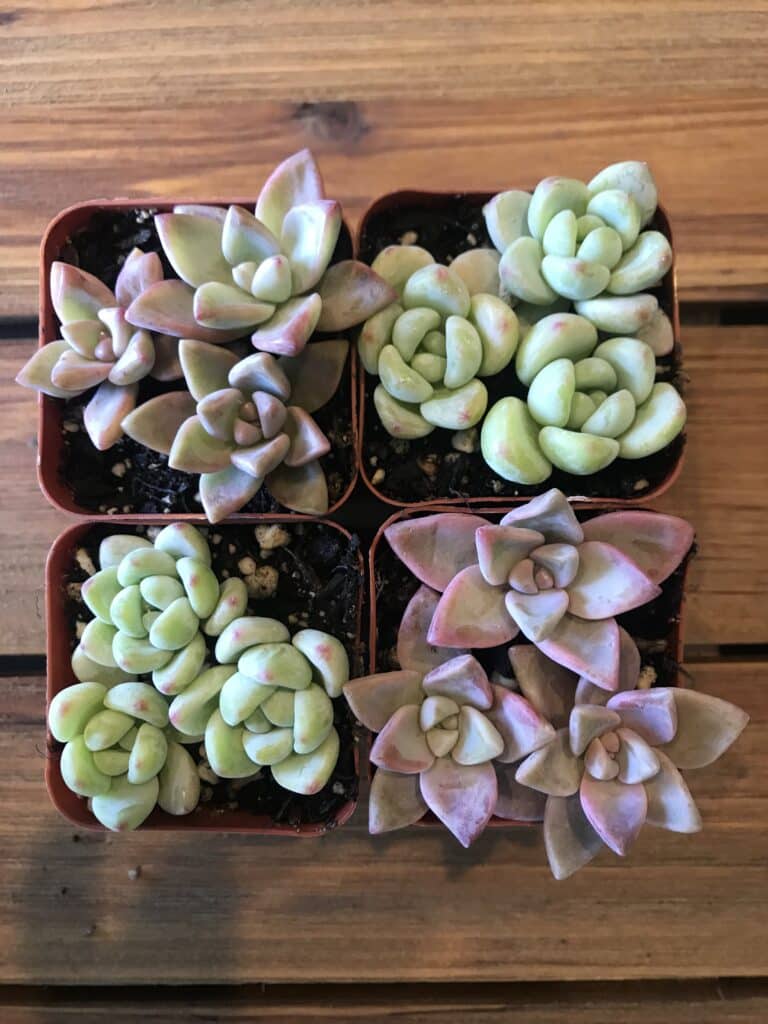
4. Treat this new plant as any regular succulent: water when the soil feels dry and give it plenty of indirect sunlight.
*Be careful not to place the plant in hot direct sun, though, especially if doing this in the summer. Since the plant has no root system, it needs protection from heat and harsh full sun until it grows roots.
Don’t give it too much water yet, either. Just water it enough to moisten the soil.
How to Propagate Leaves of Overwatered Succulents
If most of your plant cannot be saved, hopefully, you’re left with a few good leaves that you can propagate and turn into a healthy succulent plant or plants.
I’ll explain how to propagate the healthy leaves of overwatered succulents, below.
If healthy-looking leaves are left on a rotting plant, you can simply tug them off in hope that they’ll grow roots and then eventually, a baby succulent.
Healthy leaves should have color and feel firm when you press them. Let’s get started!
To propagate succulent leaves, follow these steps:
- Gently pull the healthy leaves off the stem, making a clean break, as shown below
2. Set the leaves aside on a dry surface. Let them dry out for about two to three days in the shade or indirect light (avoid full sun because this will scorch the tender leaves).
3. In about two days, place the leaves on a shallow dish filled with cactus soil.
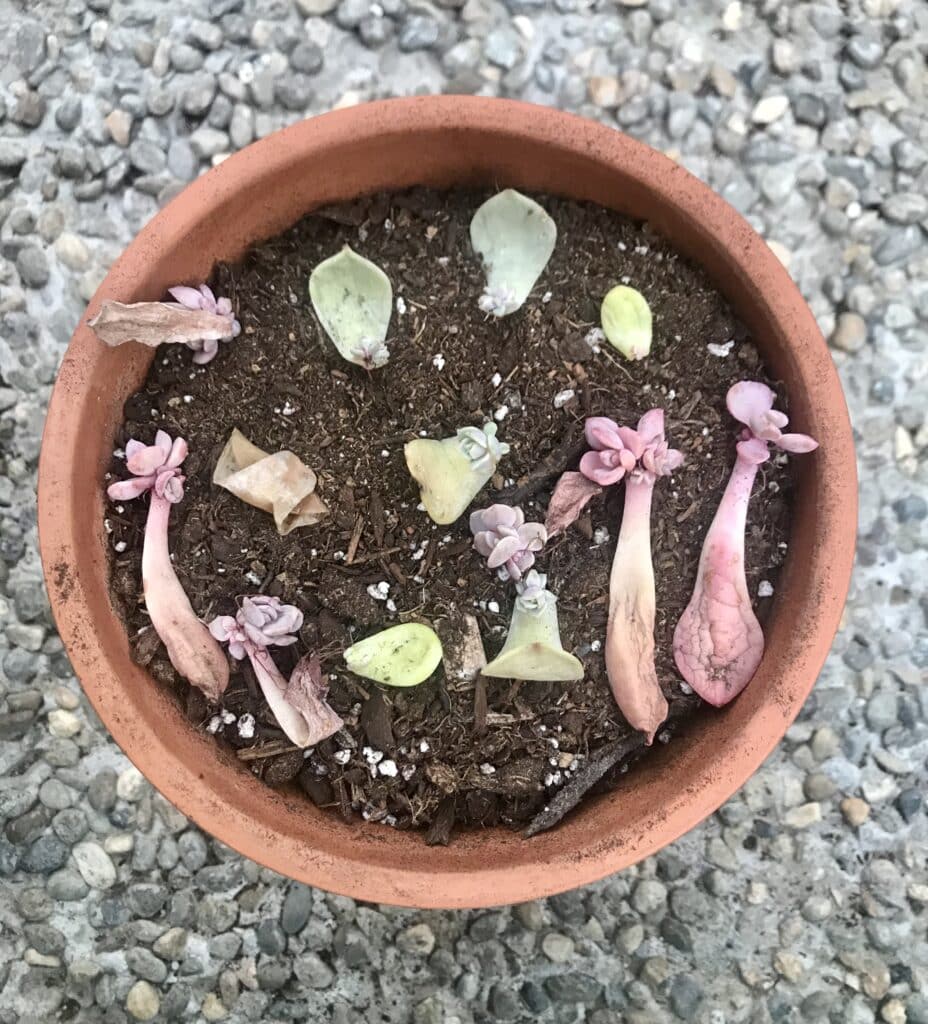
4. Grab a spray bottle filled with water and spray the soil and leaves, making sure the soil is nice and moist. Water the leaves when the soil appears to be going dry.
5. In a few weeks, you should start to see root growth. You’ll hopefully notice tiny roots sprouting from the ends of the leaves. This is good! Not all the leaves you pluck will grow roots. That’s normal. For those that never grow roots, just toss them out. They’re not going to propagate.
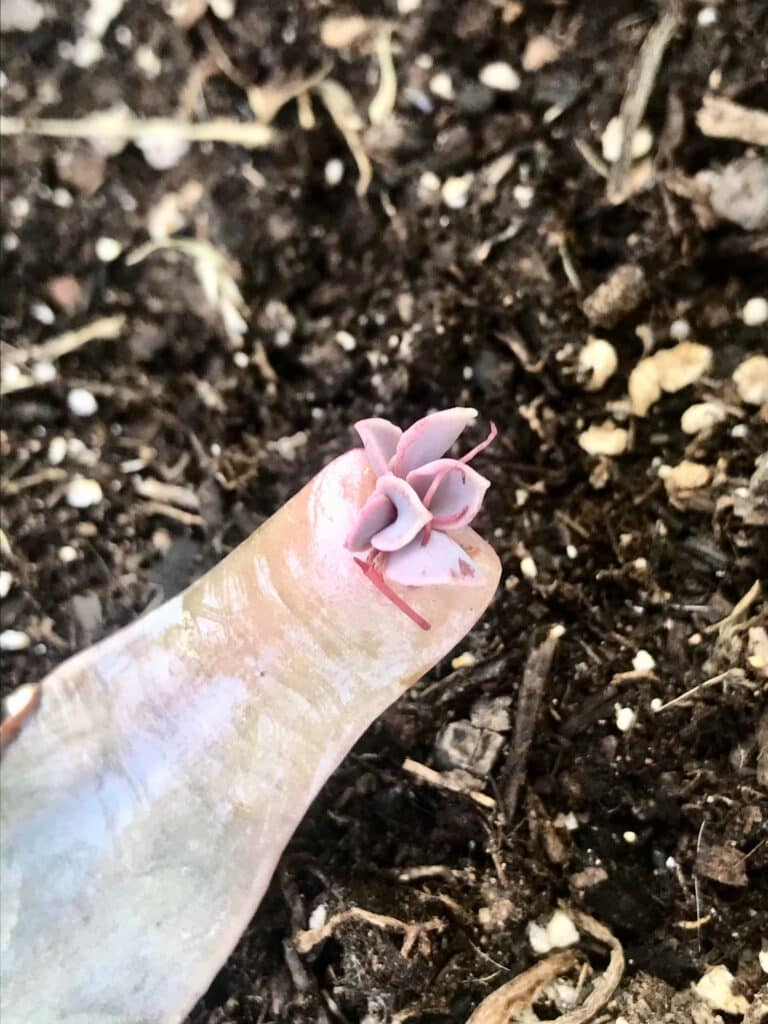
6. A few more weeks after roots appear, you’ll begin to notice tiny replicas of the mother plant forming near the roots. This means the propagation is working!
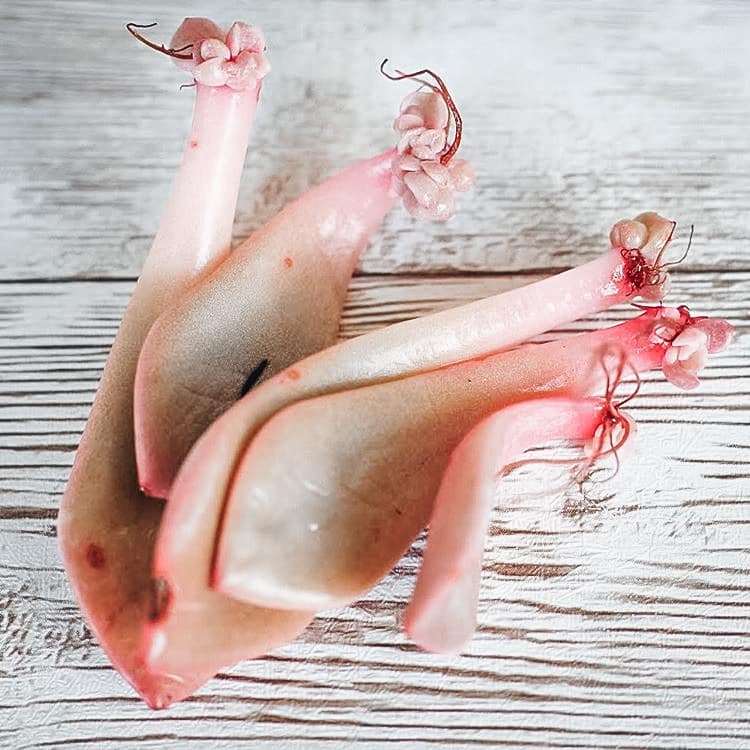
7. The baby succulent will continue to grow at a slow pace. Keep watering them when the soil goes dry, and keep them out of direct sunlight.
8. As time passes, the original leaf will become more and more wrinkly and eventually wither away. You can leave it attached until it falls off on its own.
9. Once your baby succulent is about a quarter large, you can plant it in its own pot and in new soil! Plant it in fresh soil as you would any other succulent.
After planting, wait a day or two before watering it. This gives the tiny roots a chance to heal and adjust in their new home.
10. Place your newly potted succulent in indirect sunlight. Baby succulents shouldn’t be left out in harsh or full sunlight because they can easily and quickly sunburn and even wither away!
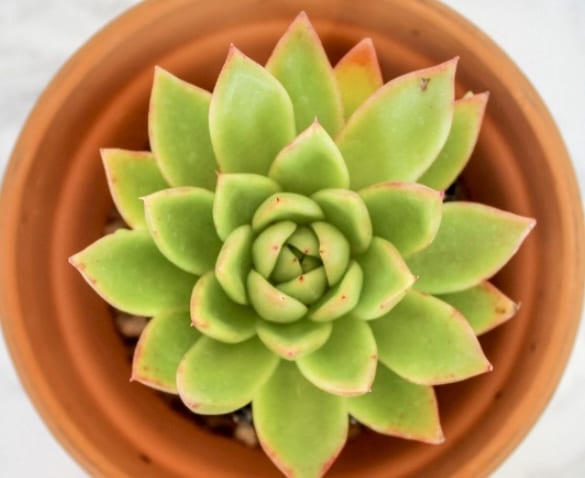
With proper care, your newly propagated succulents will go on to live a vibrant life!
Well, there you have it – those are my tricks for saving an overwatered succulent! I hope you see that an overwatered succulent is almost never too far gone. You’re usually left with at least a few healthy leaves if you notice the signs quickly.
Don’t feel discouraged if you’ve lost your favorite succulent to overwatering. It happens to experienced succulent growers, too, but it’s always a learning experience!
Good luck and I hope these tips help you grow a bountiful succulent garden!
WANT TO SAVE THIS POST FOR FUTURE REFERENCE? SAVE THE PIN BELOW TO YOUR FAVORITE PINTEREST BOARD!
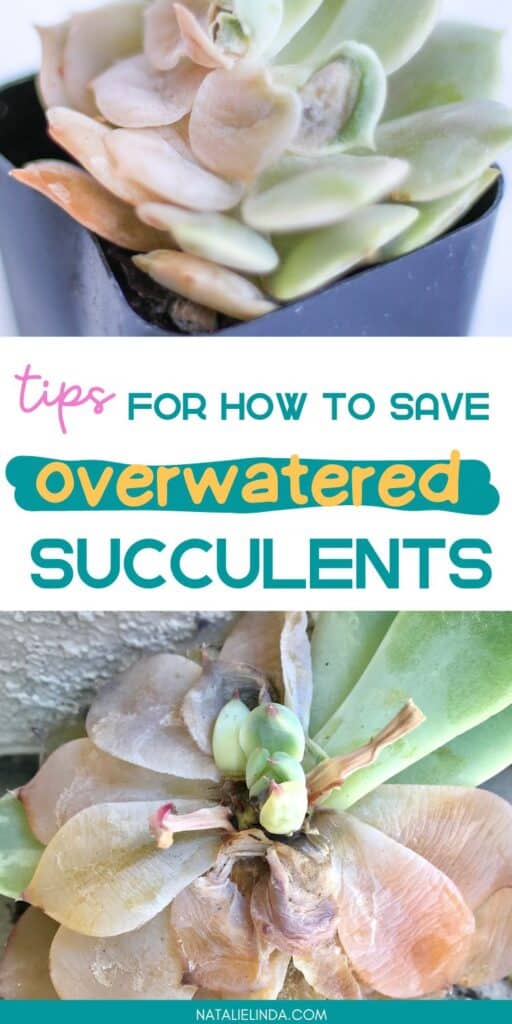
WANT TO LEARN MORE ABOUT SUCCULENTS?
I’ve got you covered with more succulent care posts plus craft posts, too!
DIY Side Yard Ideas for Transforming a Small Space
How to Water Succulents in Pots Without Drainage
Best Succulent for Full Sun
How to Save an Overwatered Succulent
DIY Succulent Arrangements: Fun and Easy Ideas for Your Home
How to Water Succulents – the Right Way
Do Succulents Die After Flowering?
How to Make Your Own Succulent Soil
How to Care for Hens and Chicks Succulents
Succulent Leaves Falling Off When Touched: Top Causes and Solutions
Growing String of Bananas: Plant Care Guide
What’s Wrong with My Succulents? Common Problems and Solutions